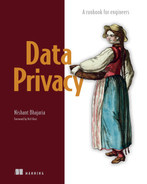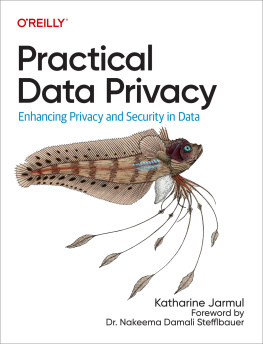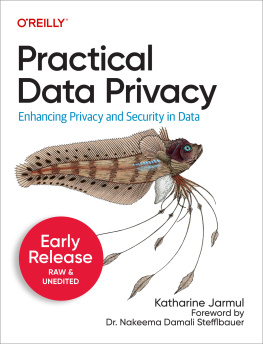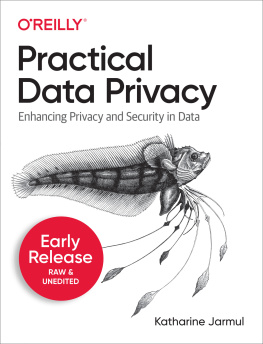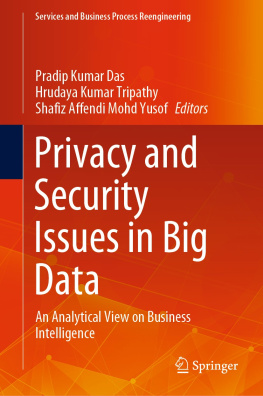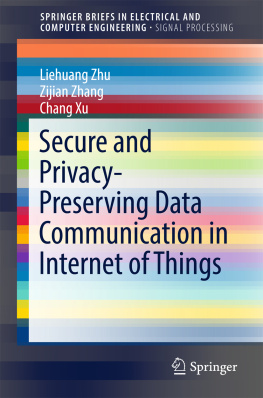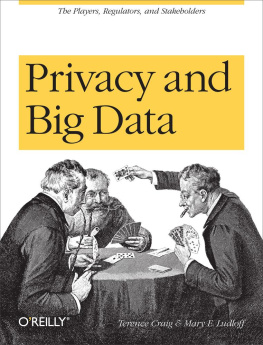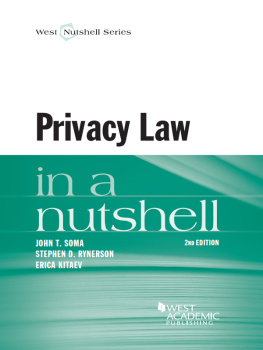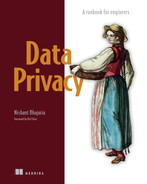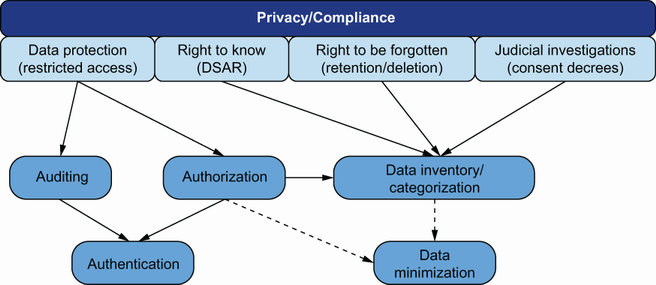Nishant Bhajaria - Data Privacy: A runbook for engineers
Here you can read online Nishant Bhajaria - Data Privacy: A runbook for engineers full text of the book (entire story) in english for free. Download pdf and epub, get meaning, cover and reviews about this ebook. year: 2022, publisher: Manning, genre: Politics. Description of the work, (preface) as well as reviews are available. Best literature library LitArk.com created for fans of good reading and offers a wide selection of genres:
Romance novel
Science fiction
Adventure
Detective
Science
History
Home and family
Prose
Art
Politics
Computer
Non-fiction
Religion
Business
Children
Humor
Choose a favorite category and find really read worthwhile books. Enjoy immersion in the world of imagination, feel the emotions of the characters or learn something new for yourself, make an fascinating discovery.
- Book:Data Privacy: A runbook for engineers
- Author:
- Publisher:Manning
- Genre:
- Year:2022
- Rating:3 / 5
- Favourites:Add to favourites
- Your mark:
Data Privacy: A runbook for engineers: summary, description and annotation
We offer to read an annotation, description, summary or preface (depends on what the author of the book "Data Privacy: A runbook for engineers" wrote himself). If you haven't found the necessary information about the book — write in the comments, we will try to find it.
In Data Privacy you will learn how to:
Classify data based on privacy risk
Build technical tools to catalog and discover data in your systems
Share data with technical privacy controls to measure reidentification risk
Implement technical privacy architectures to delete data
Set up technical capabilities for data export to meet legal requirements like Data Subject Asset Requests (DSAR)
Establish a technical privacy review process to help accelerate the legal Privacy Impact Assessment (PIA)
Design a Consent Management Platform (CMP) to capture user consent
Implement security tooling to help optimize privacy
Build a holistic program that will get support and funding from the C-Level and board
Data Privacy teaches you to design, develop, and measure the effectiveness of privacy programs. Youll learn from author Nishant Bhajaria, an industry-renowned expert who has overseen privacy at Google, Netflix, and Uber. The terminology and legal requirements of privacy are all explained in clear, jargon-free language. The books constant awareness of business requirements will help you balance trade-offs, and ensure your users privacy can be improved without spiraling time and resource costs.
Purchase of the print book includes a free eBook in PDF, Kindle, and ePub formats from Manning Publications.
About the technology
Data privacy is essential for any business. Data breaches, vague policies, and poor communication all erode a users trust in your applications. You may also face substantial legal consequences for failing to protect user data. Fortunately, there are clear practices and guidelines to keep your data secure and your users happy.
About the book
Data Privacy: A runbook for engineers teaches you how to navigate the trade-off s between strict data security and real world business needs. In this practical book, youll learn how to design and implement privacy programs that are easy to scale and automate. Theres no bureaucratic processjust workable solutions and smart repurposing of existing security tools to help set and achieve your privacy goals.
Whats inside
Classify data based on privacy risk
Set up capabilities for data export that meet legal requirements
Establish a review process to accelerate privacy impact assessment
Design a consent management platform to capture user consent
About the reader
For engineers and business leaders looking to deliver better privacy.
About the author
Nishant Bhajaria leads the Technical Privacy and Strategy teams for Uber. His previous roles include head of privacy engineering at Netflix, and data security and privacy at Google.
Table of Contents
PART 1 PRIVACY, DATA, AND YOUR BUSINESS
1 Privacy engineering: Why its needed, how to scale it
2 Understanding data and privacy
PART 2 A PROACTIVE PRIVACY PROGRAM: DATA GOVERNANCE
3 Data classification
4 Data inventory
5 Data sharing
PART 3 BUILDING TOOLS AND PROCESSES
6 The technical privacy review
7 Data deletion
8 Exporting user data: Data Subject Access Requests
PART 4 SECURITY, SCALING, AND STAFFING
9 Building a consent management platform
10 Closing security vulnerabilities
11 Scaling, hiring, and considering regulations
Nishant Bhajaria: author's other books
Who wrote Data Privacy: A runbook for engineers? Find out the surname, the name of the author of the book and a list of all author's works by series.

